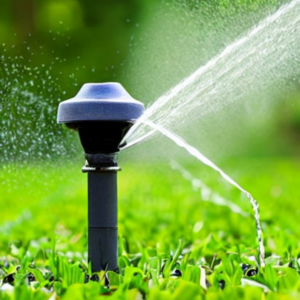Are you tired of dealing with a malfunctioning spray bottle nozzle? Frustrated by the lack of control or the inconsistent spray pattern? Well, fret no more! In this article, we will guide you through the process of fixing a spray bottle nozzle so that you can get back to your cleaning and gardening tasks with ease.
Imagine the satisfaction of effortlessly spraying a fine mist or a powerful jet exactly where you need it. No more wasted product or messy applications. With just a few simple steps, you can revive your trusty spray bottle and restore its functionality.
From identifying the problem and cleaning the nozzle to checking for clogs and adjusting settings, we will cover all the necessary troubleshooting techniques.
And if all else fails, we’ll even show you how to replace the nozzle or use a replacement spray head.
So, don’t let a faulty nozzle dampen your spirits. Let’s dive in and learn how to fix that spray bottle nozzle once and for all!
Identify the Problem with the Nozzle
Can’t figure out why your spray bottle isn’t working? Let’s identify the problem with the nozzle!
When troubleshooting a faulty spray bottle, it’s important to examine the nozzle closely. There are several common nozzle problems that can hinder its functionality.
First, check if the nozzle is clogged with dirt or debris. Use a pin or toothpick to gently remove any obstructions and then rinse it thoroughly with warm water.
Another possible issue could be a misaligned nozzle, which can prevent proper spraying. In this case, try twisting the nozzle slightly until it aligns properly with the bottle opening.
If these troubleshooting tips don’t solve the problem, it may be necessary to clean the nozzle more thoroughly by disassembling it completely.
Clean the Nozzle
It’s a breeze to freshen up the nozzle with a quick and thorough clean. Start by removing the nozzle from the spray bottle, if possible.nnRinse it under warm water to remove any dirt or debris.nnIf there are stubborn stains or clogs, soak the nozzle in a cleaning solution made of equal parts vinegar and water for about 30 minutes.nnThen, use a toothbrush or small brush to scrub away any remaining residue.nnAfter rinsing thoroughly, dry the nozzle completely before reattaching it to the spray bottle.nnIf you’re still experiencing issues with the nozzle after cleaning, it may be necessary to check for clogs in the tube leading to it.
Now let’s move on to troubleshooting techniques for this next step…
Check for Clogs in the Tube
To ensure a smooth spraying experience, it’s important to check for any clogs in the tube leading to the nozzle. Blockages can disrupt the spray pattern and prevent the spray bottle from functioning properly. Here is a practical way to troubleshoot this issue:
| Clog Type | Solution |
|---|---|
| Hardened Residue | Soak the nozzle in warm soapy water for 15 minutes, then use a small brush or toothpick to remove any hardened residue. Rinse thoroughly before reattaching. |
| Debris Build-up | Detach the nozzle from the bottle and flush it with water to dislodge any debris. If necessary, use a pipe cleaner or needle to gently unclog the tube. Reattach after cleaning. |
By checking for blockages and troubleshooting your spray pattern, you can restore your spray bottle’s functionality. Once you have cleared any clogs, you can move on to adjusting the nozzle settings for optimal spraying results without interruption.
Adjust the Nozzle Settings
Once you’ve cleared any clogs, simply adjust the nozzle settings for a seamless and efficient spraying experience. Troubleshooting tips for common nozzle problems can help you get the most out of your spray bottle.
One common issue is a misaligned nozzle that leads to uneven spraying or leakage. To fix this, locate the adjustable pattern dial on the nozzle head. Turn it clockwise or counterclockwise to choose between a fine mist, a jet stream, or anything in between.
Another problem could be an improper spray angle, causing liquid to go in unintended directions. In this case, look for an angle adjustment knob near the base of the nozzle and rotate it until you find the desired spray angle.
If these adjustments don’t solve your issues, it may be time to consider replacing the nozzle altogether, which we’ll discuss next.
Replace the Nozzle
When replacing the nozzle, imagine the smooth transition as you twist off the old nozzle and effortlessly attach a brand new one.
To begin troubleshooting, check if there’s any debris clogging the nozzle. Use a pin or needle to unclog it by gently pushing through the opening.
If this doesn’t solve the issue, try soaking the nozzle in warm soapy water for a few minutes to remove any stubborn residue. Alternatively, you can also soak it in vinegar overnight to break down mineral deposits.
If all else fails, it may be time to use a replacement spray head. This option ensures that you have a fully functional nozzle without any further hassle or inconvenience.
Use a Replacement Spray Head
To replace the nozzle on your spray bottle, you have the option of using a replacement spray head. This is an easy and convenient solution that will get your spray bottle back in working order quickly. When choosing a replacement spray head, there are a few troubleshooting tips to keep in mind. First, make sure to find a compatible replacement that fits the size and shape of your current nozzle.
Additionally, consider the type of liquid you will be spraying and choose a spray head with appropriate settings such as mist or stream. By following these tips, you can easily find a suitable replacement for your spray bottle nozzle and continue using it effectively. Now let’s move on to the next section where we will discuss how to prevent future issues with proper maintenance.
Prevent Future Issues with Proper Maintenance
Ensure the longevity of your spray bottle’s functionality by implementing regular maintenance practices. The importance of regular cleaning for spray bottle nozzles can’t be overstated.
Over time, residue from the solutions you use can build up and clog the nozzle, rendering it useless. To prevent this, simply rinse the nozzle with warm water after each use and wipe it clean with a soft cloth. Avoid using harsh chemicals or abrasive materials that could damage the nozzle.
Additionally, make sure to store your spray bottle in a cool, dry place to prevent any moisture buildup that could lead to mold or mildew growth inside the nozzle.
By following these simple steps, you can avoid common mistakes and keep your spray bottle working smoothly for years to come.
Frequently Asked Questions
How do I identify the problem with my spray bottle nozzle if it’s not mentioned in the article?
To identify problems with your spray bottle nozzle when it’s not mentioned in the article, you can start by checking for common issues such as clogs or blockages.
Inspect the nozzle for any debris or residue that may be hindering its functionality.
You can also test if the nozzle is properly aligned and tightly secured.
Additionally, try adjusting the spray settings to see if that resolves the problem.
These troubleshooting techniques should help you identify and address any issues with your spray bottle nozzle.
Are there any specific cleaning methods or materials I should avoid when cleaning the nozzle?
To ensure the longevity of your spray bottle nozzle and avoid potential damage, it’s important to follow best practices for maintenance. When cleaning the nozzle, steer clear of harsh chemicals that could corrode or degrade its components. Instead, opt for a gentle solution of warm water and mild dish soap.
Be sure to thoroughly rinse and dry the nozzle before reassembling it. Regularly inspecting and cleaning your spray bottle nozzle will help keep it in optimal working condition.
How can I check for clogs in the tube if the article doesn’t provide any guidance on this?
To check for clogs in the tube and troubleshoot nozzle issues, start by removing the spray bottle nozzle from the tube.
Inspect both the nozzle and tube for any visible debris or blockages.
If you see any clogs, use a small brush or toothpick to carefully remove them.
Alternatively, you can soak the nozzle in warm soapy water to loosen any stubborn clogs.
Once cleaned, reattach the nozzle to the tube and test it out to ensure proper functionality.
Are there any safety precautions or instructions I should follow when adjusting the nozzle settings?
When adjusting the nozzle settings on a spray bottle, it’s important to follow some safety precautions and instructions.
First, ensure that the bottle is empty to avoid accidental spraying.
Next, turn the nozzle gently in both directions until you find the desired setting. Avoid forcing or overtightening the nozzle as this may cause damage.
Finally, test the spray pattern before using it on delicate surfaces or near your face.
Where can I find a replacement spray head if I am unable to fix the nozzle?
If you’re unable to fix the nozzle on your spray bottle, you can find a replacement spray head at most hardware stores or online retailers. Look for one that’s compatible with your specific bottle model. When purchasing a replacement, make sure it comes with clear instructions on how to install it.
Remember to follow any safety precautions mentioned in the packaging or product manual when fixing your spray bottle nozzle.

I’m Carlos Robert, a passionate gardener, and blogger. With years of experience and knowledge in the field of garden watering, I have created a blog to share my insights and tips on the topic. I strive to provide readers with detailed information about all aspects of sprinkler systems, from garden sprinklers to fire sprinklers, along with nozzles, hoses, and other related products. I love helping my readers create the perfect garden with their ideal setup!
